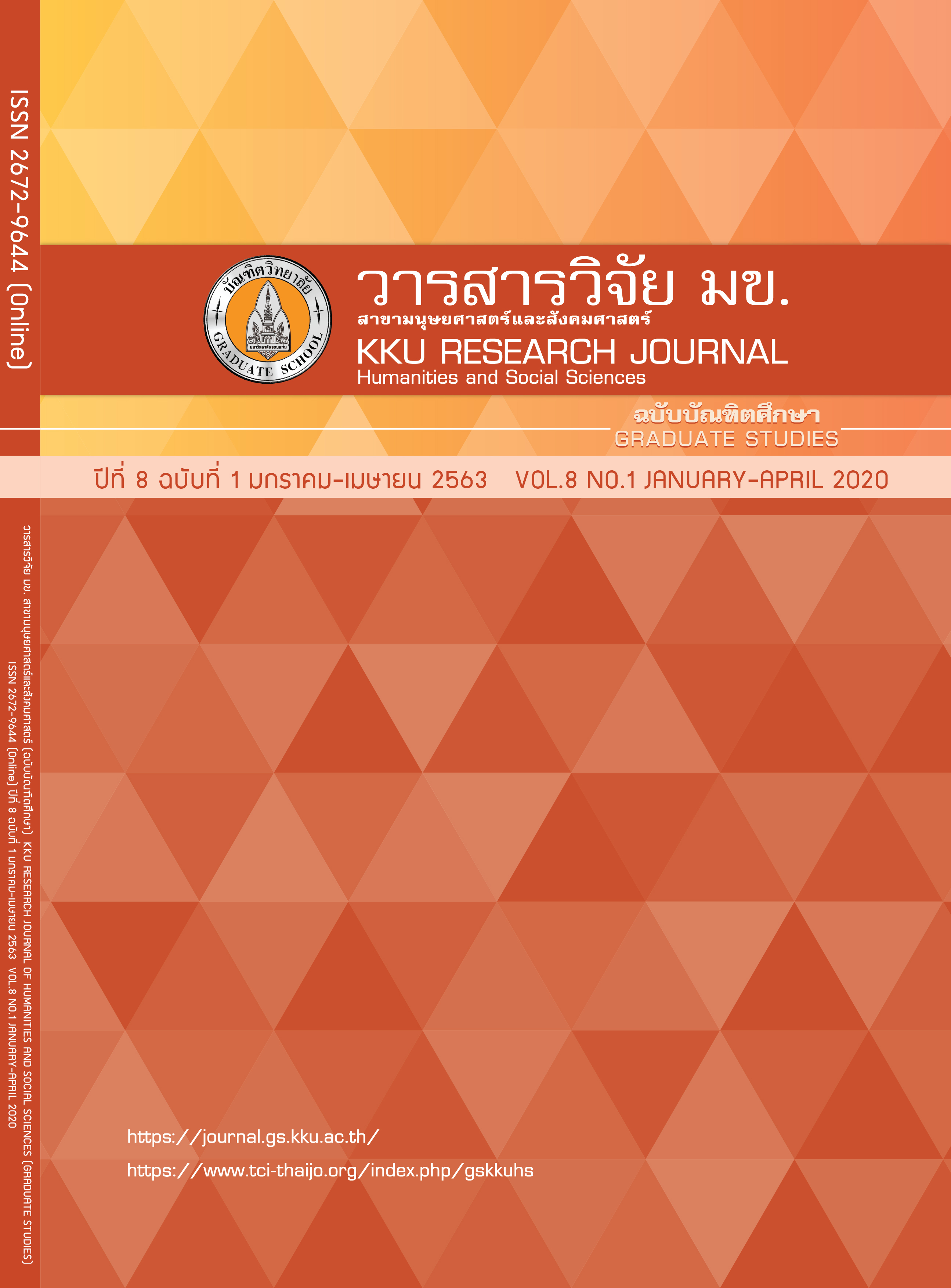Code-Switching and Attitude of Teachers and Students in Talented Program in a Secondary School
Keywords:
Code switching, English language teachingAbstract
The objectives of this research were to study the number and proportion of English and Thai used in classroom, to analyze the types and purposes of code switching and to study the attitude toward code switching of Thai teachers and students in Matthayomsuksa 1 and 5 with Thai teachers and students in Matthayomsuksa 4 with a foreigner teacher. The data was collected by video-recorded observation and interview. The finding showed four types of code switching. The intrasentential was found the most while code selection was the least. In addition, most of the code switching were used to emphasise and the least frequent use was to sue and excuse. This research also showed that both of the teachers and students agreed that code switching positively influenced learning and schooling developing process.
References
Anton and DiCamilla’s “Socio-Cognitive Functions of
L1 Collaborative Interaction in the L2 Classroom”.
The Modern Language Journal. 1998; 83(2): 248-254.
2. Cook V. Second language learning and teaching.
New York: Oxford University Press; 2001.
3. Dailey-O’Cain J, Liebscher G. Teacher and student use
of the first language in foreign language classroom
interaction: Functions and applications. In: Turnbull M,
Dailey-O’Cain J, editors. First language use in second and
foreign language learning. UK: Clevedon. 2009:131-144.
4. Macaro E. Analysing student teacher’s codeswitching in
foreign language classrooms: Theories and decision
making. The Modern Language Journal. 2001; 85(4): 531-548.
5. Swain M, Lapkin S. Task-based second language learning:
The uses of the first language. Language Teaching
Research. 2000; 4: 251-274.
6. Heredia R, Altarriba J. Bilingual language mixing:
Why do bilinguals code-switch? Current Directions in
Psychological Science. 2001; 10: 164-168.
7. Krashen SD. Principles and Practice in Second Language
Acquisition. Prentice-Hall International; 1987.
8. Simon L. Towards a new understanding of code-switching
in the foreign language classroom. In: Jacobson R, editor.
Trends in Linguistics: Code-switching Worldwide II.
Berlin: mouton de Gruyter; 2001.
9. Cook V. Using the First Language in the Classroom 2016
[Internet]. [cited 2016 Sep 25]. Available from:
http://www.utpjournals.press/doi/abs/10.3138/cmlr.57.3.402.
10. Miles MB, Huberman AM. Qualitative Data Analysis.
An Expanded Sourcebook (2nd ed.). Thousand Oaks. CA:
Sage; 1994.




